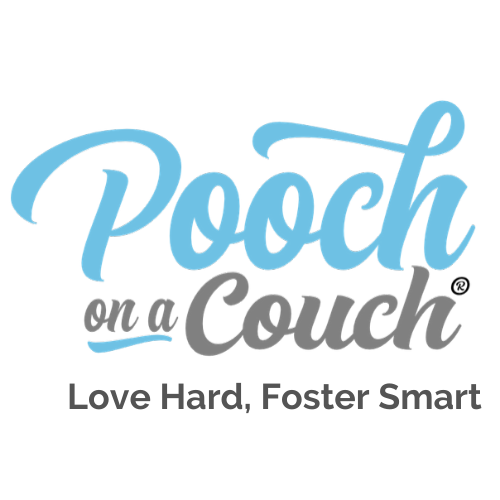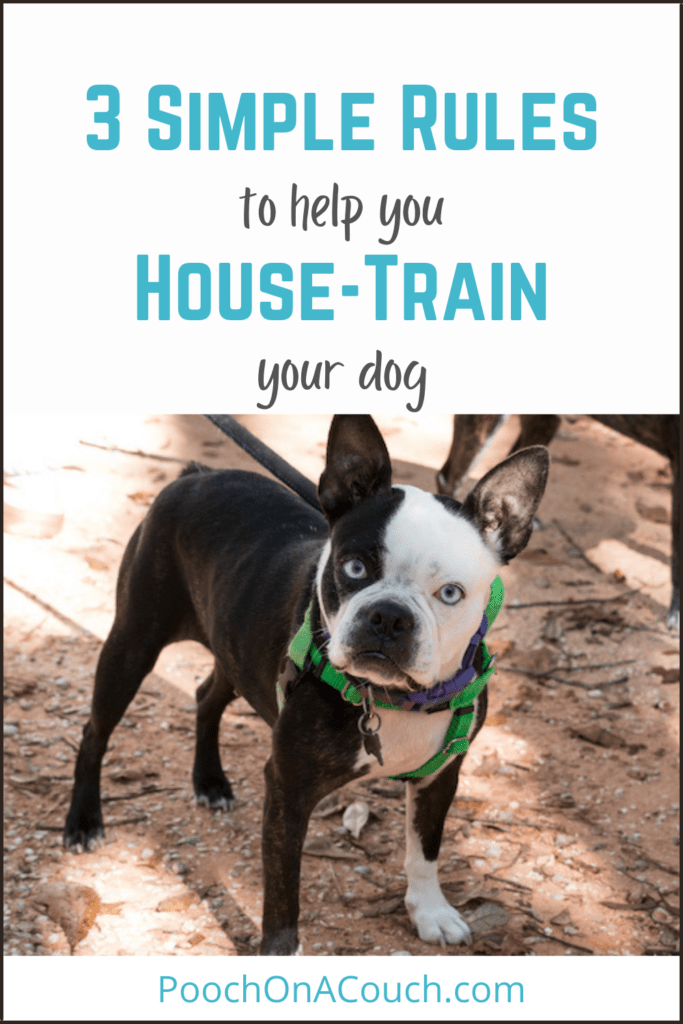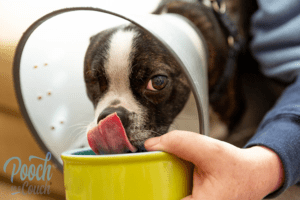As A Foster Parent, You Will Have to House Train A Dog
As the saying goes – “Ain’t nobody got time for that.”
It’s true, house training your dog takes time, dedication, and a little bit of precision. Sadly, most families looking to adopt a dog – especially an adult dog – want a dog that is already house-trained. Shoot. I have had foster homes require their new foster dog to be already house-trained. That’s hard to promise.
With the tens of thousands of dogs that are available for adoption, when given a choice, families are more likely to choose to adopt a dog with more skills, and a house-trained dog is quite desirable. If you are reading this blog post, you want to know how to quickly and effectively house train your dog, and I can help.
Disclosure: This post contains affiliate links. As an affiliate, I earn a commission on qualifying purchases made through these links, at no additional cost to you. I only recommend products I use and love or plan to purchase myself.
House Training Is A Big Deal
Indeed, house training difficulties are a top reason dogs are surrendered to shelters, re-homed, or simply put outside to live. House training your dog is not hard, but it does require attention – something that we have a hard time with our Instamatic, multi-tech, busy, and highly distracted lifestyles.
Ain’t No Such Thing As A Pee-Free Foster Home.
Before I jump into the how-to of house-training your dog, I want to make a point: Any dog that arrives in your home as a foster dog may be house-trained and still have a potty incident indoors within the first couple of days.
Stress may cause it, an undiagnosed urinary tract infection may cause it, or simple marking behavior may cause an otherwise house-trained dog to pee in your house. Have your urine-stain solution on ready, quietly clean up the mess, and observantly move on.
First, rule out medical conditions as a cause for potty accidents
There are many medical conditions that can make it hard for a dog or puppy to not have accidents in the home. Some of those conditions are:
- urinary tract infection
- spay incontenence
- stones
- prostate issues
- intestinal worms or protozoans
Always let your veterinarian know if you are struggling with house-training your dog. There may be a medical reason for it!
House Training Your Dog Boils Down To Three Goals:
- Avoid accidents in the home.
- Increase incidents of successful toileting outside.
- Avoid accidents in the home.
It’s that basic.
It’s also a little easier said than done.
You Need Equipment To House Train Your Dog
- Make spaces smaller. An untrained foster dog does not need full access to your house. Truth be told, they may not need full access to a room! You want to provide them with a space they will be motivated to keep clean. Dogs usually do not want to soil their bedding. It is why crates are the number one piece of equipment recommended when house training your dog.
I personally use crates, some of my rescue friends will use a crate along with an exercise pen. A baby gate may be useful to keep your untrained dog out of important rooms. I find if I use an exercise pen or a small room, my foster dog will choose a corner of the x-pen or room as their bathroom.
I don’t want them to have that choice! - Buy a good cleaning solution is important to have for when there is a urine accident. Nature’s Miracle is highly rated, Odoban is used by many kennels, or others find that a good white vinegar/water solution works just fine.
- If you have carpet, I suggest investing in a Bissell SpotBot spot cleaning machine, especially if you are determined to have your untrained dog unsupervised in a carpeted room. I love this thing! Because of this machine, I’m able to keep my nice area rugs down.
- If you foster a male dog that likes to mark his territory, belly bands are your best friend! You can pick them up at a really good price on etsy.com. Word of caution: do not rely on belly bands for house-training your male dog. Belly bands are useful to control marking; they do not teach a dog house-training skills. Only you can do that.
Suggestion: add a human incontinence pad inside a belly band for increased absorption. - Hate the idea of crating, confining, or otherwise restricting your dog’s movements around the house? You’ll want a means to tether your dog to your waist, every waking minute of the day and through the night. Tell me how long that works out for ya. 😉
Remember Our Three Goals?
- Avoid accidents in the home.
- Increase incidents of successful toileting outside.
- Avoid accidents in the home.
Use A Schedule To House Train Your Dog
Dogs (and puppies) usually have the urge to pee after these four activities:
- Immediately upon waking up in the a.m.
- After eating
- After playing
- After napping
Dogs also appreciate the opportunity to void their bladder every few hours. Don’t you?
When I’m training, I use an every 2-hour schedule and then increase the time between outside visits until I hit an every 4-hour interval. Even when I have an adult dog who has the physical capability to hold a bladder for 4+ hours, I’m seeking repetition of a desired behavior. Therefore, I take an adult dog outside more frequently when I’m beginning a house training plan or trying to help a new dog adjust to my routine.
I also use a journal – seriously, I do! My observations, what time we go out, and when the bowel movements happen, and any other information that I think is helpful becomes a journal entry. (Poop yields important information!)
My House-Training Plan Looks Like This At First:
| 6:00 a.m. | Wake up, leash dog, and take it outside, always to my preferred potty area. |
| 6:15 a.m. | Feed Meal. Once finished, leash dog and take it outside AGAIN. If dog eliminates, allow 20-30 minutes of supervised play, encourage to pee again, then crate, provide the dog an enrichment toy. |
| 9:00 a.m. 11:30 a.m. 2:00 p.m. 4:30 p.m. | Let dog out of the crate, leash dog and immediately take it outside. Once the dog has eliminated, allow supervised play for 20-30 minutes, encourage to pee again, then return to crate, provide the dog an enrichment toy. |
| 6:00 p.m. | Feed Meal. Once finished, leash dog and take it outside. Once dog eliminates, allow 20-30 minutes of supervised play, encourage to pee again, then crate, provide the dog an enrichment toy. |
| *8:30 p.m. | Let the dog out of the crate, leash dog and immediately take it outside. Once the dog has eliminated, allow supervised play for 20-30 minutes, encourage to pee again, then return to the crate, provide the dog an enrichment toy. |
| 10:00 p.m. | Leash dog and take outside for final potty before bed. Discourage play. The day is done. Place in the crate for night sleep. |
Every time my foster dog in training pees and poops outside, they get a “good job!”, physical praise (if they like being touched) and an invitation to play. Sometimes, I will reward with a treat. What are we doing here? We are telling our dog that good things happen when they potty outside. Dogs like it when good things happen!
Depending upon your dog, you may find your dog is asking to go outside in the middle of the night. Consider a few things: is the dog being treated for a UTI? Is the dog a little anxious at night? Is the dog still quite young? Or very old?
Use discretion, but I find that if there is no reason for an adult dog to need to go outside to eliminate in the middle of the night, I will quietly reassure, then go back to bed. I want to set my rule that nighttime is for sleeping. If I decide to take them outside, I do not make a big deal out of anything. I’m quiet and down to business. We want our dogs to sleep through the night, not encourage 2 a.m. playtime!
The Other Rules For House Training Your Dog
So, with our schedule, we’ve set a few rules: Potty only happens outside, and during certain intervals. Not only are we training the dog, we are training the dog’s bladder and bowel to have the urge to eliminate at regular intervals, AND to be able to hold it until they get to go outside.
Think about it: Do you in general pee at the same time each day? Do you poop at the same time each day? You probably do. I do! When we can help the dogs system become used to a routine, our house-training successes increase.
Be Observant
With the schedule in place, observation is the other piece of the puzzle. When we are outside waiting for elimination to happen, what behaviors does the dog exhibit? Do they put their nose to the ground and sniff, sniff, sniff? Do they walk in a circle? Do they pick up their pace and walk a little faster?
These are the same behaviors we look for inside – and when we see them, we catch the need to potty before the accident happens. We also train the dog to give us other signals such as stand at the door, ring a bell, or whatever trick you want your dog to do.
Be Predictable
I tell my foster dogs where I want them to eliminate, and I lead them to that spot every visit outside. This is the value of using the leash early on in training. It’s also important that dogs learn how to eliminate while leashed. It is a core skill, in my opinion.
Close Up The Pet Door!
And for goodness sake!!!! SHUTTER YOUR PET DOOR and quit relying on pee pads. It will take you a much longer time to house train your dog if you don’t control when they go outside or if you allow them to pee on pee pads that are scattered in every room of your home.
Your House-Trained Dogs Help Train – But Don’t Expect Them To Do The Job For You.
I find that in conjunction with my highly structured potty training schedule, my house-trained dogs help train, too. At first, I take a non-trained dog outside alone. Fewer distractions, right? But, later, after they begin to get the routine, I can include another dog for our trips outside, and good potty behavior is mimicked.
When To Introduce “The Potty Word”
Choose a potty cue you will use for your training. It should be unique enough that it isn’t usually a part of your everyday language and a cue that you will use consistently, even when you are pottying your dog around other people.
I introduce the potty cue on day one, trip one. I don’t say anything until I observe poop. When I see this, I begin to say every second or so my potty cue: “hurry up”. My father’s potty cue for his dogs was “do your job.” You choose whatever word will be easiest for you to stick to.
Once the dog is conditioned to the potty word, I say the potty word when I observe what I think is pre-pottying behavior: head down, sniffing, a different pace, different body positions soon as we go outside to our potty location. Eventually, I’ll say the word every few seconds as we are approaching the potty location, and by the time we get there, the dog is often ready to go, pronto!
What does this do? It conditions the body to respond to that word, and prepare to eliminate. Try this with your own dog! In stormy weather or when it’s bitter cold outside, you’ll thank me!
What Do I Do When The Dog Has An Accident Inside?
Nothing.
You say nothing, and you quietly clean up the mess and deodorize with your product of choice.
You work to figure out when/how/why you missed an observation. If you didn’t see the accident happening in real time, you were not paying attention. Remember Goal #1? Avoid accidents.
There you have it! A very basic but structured house-training plan for any adult dog or weaned puppy. (puppies truly may need to go outside in the midle of the night.)
Do you have any tips or suggestions to house train your dog? Are you struggling with house-training issues? Let us know in the comments!
Pin Me!

Popular Posts
- HOW TO CHOOSE A DOG RESCUE AGENCY
- ULTIMATE GUIDE TO FOSTERING: 10 SKILLS YOU NEED
- VOLUNTEER IF YOU CANNOT FOSTER





